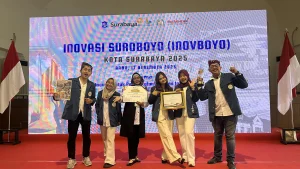VOKASI NEWS – visual storytelling enhances grammar instruction for young English learners, focusing on present tense and pronoun usage.
The integration of visual elements in language education has revolutionized traditional grammar instruction methods. Contemporary educational research emphasizes the importance of multimodal learning approaches, particularly for elementary-level English language learners. This study examines how visual storytelling techniques can enhance the teaching of fundamental grammatical structures, specifically focusing on simple present tense and pronoun usage in early childhood education contexts.
Visual learning materials, particularly illustrated narratives, provide cognitive scaffolding that supports abstract grammatical concept comprehension. Research by educational psychologists demonstrates that children aged 8-9 years benefit significantly from learning approaches that combine textual information with visual representations, as this dual-coding system enhances memory retention and conceptual understanding.
Theoretical Framework
Based on Azar and Hagen’s (2002) grammatical framework, effective grammar instruction requires systematic presentation of structural patterns alongside meaningful contextual applications. The simple present tense, encompassing affirmative, negative, and interrogative formations, serves as the foundation for English communicative competence. Similarly, pronoun usage patterns including subject, object, possessive, and interrogative categories form essential building blocks for coherent discourse production.
Interactive dialogue formats prove particularly effective for grammar instruction because they mirror authentic communication situations. When learners encounter grammatical structures within conversational contexts, they develop both structural understanding and pragmatic awareness simultaneously. This dual development supports long-term language acquisition and communicative confidence.
Contemporary Applications
Modern educational materials increasingly incorporate character-driven narratives to contextualize grammar instruction. These approaches typically emphasize habitual actions over general factual statements, reflecting children’s natural interest in routine activities and personal experiences. Statistical analysis of effective materials reveals optimal distributions favoring affirmative constructions (approximately 50-55%) with substantial interrogative elements (25-30%) to maintain learner engagement.
Pronoun distribution patterns in successful educational materials demonstrate strategic emphasis on first-person and second-person forms, facilitating personal connection and interactive engagement. Subject pronouns typically constitute the majority of pronoun usage (50-55%), while interrogative and possessive forms provide essential variety for comprehensive grammatical exposure.
The conversational approach creates authentic learning environments where grammatical structures emerge naturally within meaningful communicative contexts. This methodology supports both explicit grammatical knowledge development and implicit language acquisition processes, resulting in more balanced linguistic competence.
Implications for Educators
Educational practitioners should consider implementing visual storytelling approaches that systematically integrate target grammatical structures within engaging narrative frameworks. Effective materials balance structural variety with contextual authenticity, ensuring comprehensive grammatical coverage while maintaining learner motivation and engagement.
Furthermore, interactive dialogue formats encourage active learner participation, transforming passive grammar instruction into dynamic communicative experiences. This transformation supports both immediate learning objectives and long-term language development goals.
[BACA JUGA: Klenteng Sukha Loka Surabaya: Simbolisme 22 Altar dalam Tradisi Tionghoa]
Visual storytelling approaches offer significant potential for enhancing grammar instruction effectiveness in elementary English language education. By combining systematic grammatical presentation with engaging narrative contexts, educators can create learning environments that support both structural understanding and communicative competence development. Future research should continue exploring innovative applications of multimodal learning approaches to support diverse learner needs and preferences.
***
Penulis: Nabila Ghinasya
Editor: Habibah Khaliyah






